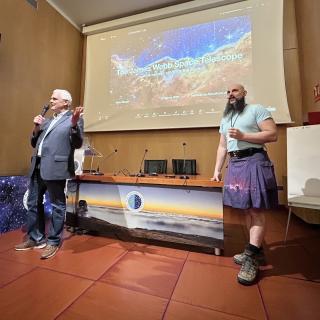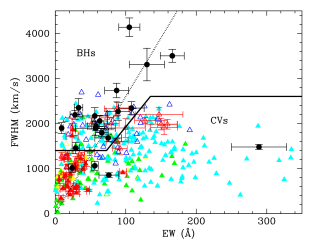Galaxy formation entails the hierarchical assembly of mass, along with the condensation of baryons and the ensuing, self-regulating star formation.
The stars form a collisionless system whose orbit distribution retains dynamical memory that can constrain a galaxy's formation history. The ordered-rotation dominated orbits with near maximum circularity λz≃1 and the random-motion dominated orbits with low circularity λz≃0 are called kinematically cold and kinematically hot, respectively.
The fraction of stars on `cold' orbits, compared to the fraction of stars on `hot' orbits, speaks directly to the quiescence or violence of the galaxies' formation histories. Here we present such orbit distributions, derived from stellar kinematic maps via orbit-based modelling for a well-defined, large sample of 300 nearby galaxies.
The sample, drawn from the CALIFA survey, includes the main morphological galaxy types and spans the total stellar mass range from 108.7 to 1011.9 solar masses.
Our analysis derives the orbit-circularity distribution as a function of galaxy mass, p(λz|M✸), and its volume-averaged total distribution, p(λz). We find that across most of the considered mass range and across morphological types, there are more stars on `warm' orbits defined as 0.25 ≤ λz ≤ 0.8 than on either `cold' or `hot' orbits. This orbit-based "Hubble diagram" provides a benchmark for galaxy formation simulations in a cosmological context.



